The forearm bones are surrounded by numerous small muscles, tendons, and ligaments. They’re crucial for performing everyday tasks, and they can often become aggravated while rowing or erging.
The key difference that you should seek to distinguish as a rower is this: Is your pain coming from delayed onset muscles soreness (DOMS)? Or is it a result of an injury like tendonitis?
I’ll analyze this question and similar rowing/forearm pain ones in the next few minutes.
Why do I have tight forearms while rowing?
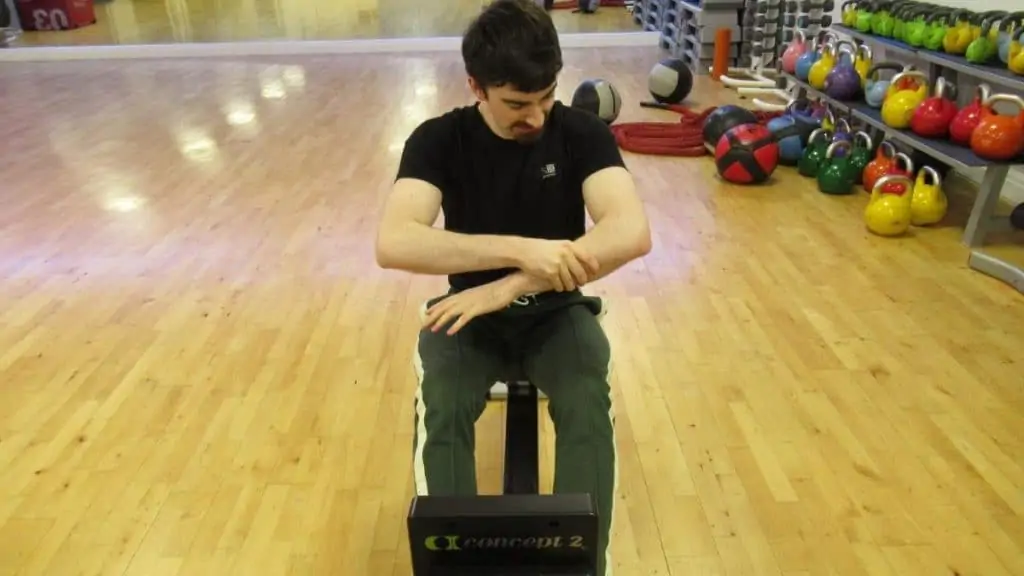
When you’re new to rowing and haven’t quite nailed the technique, it’s easy to over rely on your arms. And as you might have realized already, this overreliance is a mistake.
The arms are much weaker than your back muscles, and so they naturally fatigue much faster under a given load. This creates a huge surge of lactic acid that rushes into the muscles and acutely reduces their force output potential (i.e., their ability to contract).
Eventually, this lactic acid can lead to a cramping sensation. It’s easy to confuse this intense feeling with an injury. So the best thing that you can do at this point is to stop rowing for a few minutes and let the cramp subside.
If you have a tight forearm muscle, then this could also be due to muscles soreness (DOMS).
Whereas lactic acid inhibits muscle contraction acutely, muscle soreness takes longer to manifest because the muscle tissue has to break down, which happens after you’ve finished rowing.
So if you try to row with sore forearms, then you might well feel an uncomfortable tightness in your arms. If you’re a novice, your body will adapt to this demand as it learns to handle your regular rowing.
However, if you’ve been rowing for a while, then this forearm tightness may be a sign that you’re simply overtraining or in need of a well-deserved break.
Why do I have forearm pain when rowing?
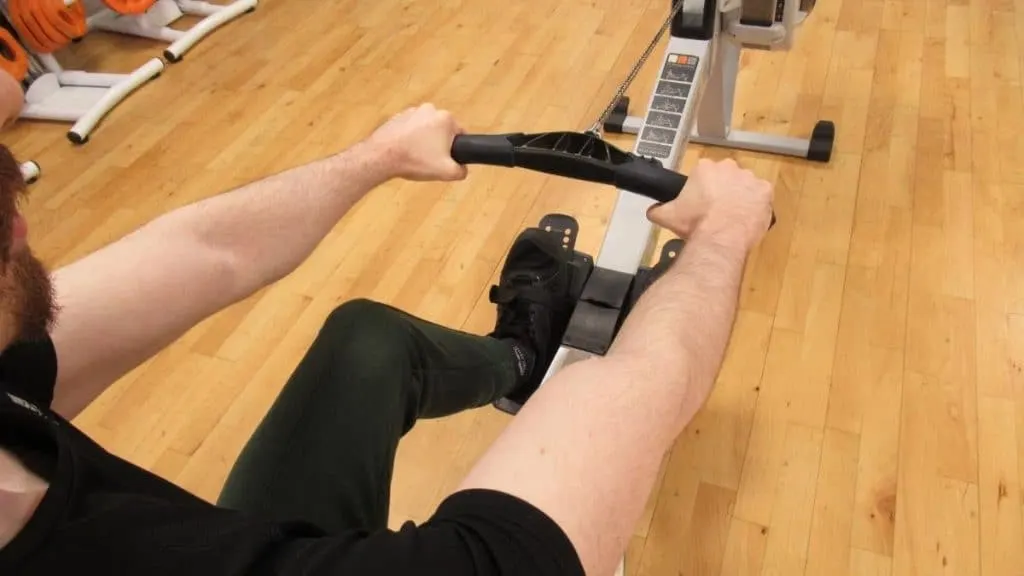
If you’re experiencing pain rather than tightness when rowing, then first assess at your form.
Are you gripping too tightly? This is a common beginner mistake. You want to grip tight enough to hold onto the handle, but not so tightly that it looks like you’re trying to hold onto a cliff edge.
You might also be relying too much on your arms and underutilizing your upper back. This then puts more tension on your wrists, hands, and elbows, which are all related to various forearm problems.
So, first and foremost, audit your technique so that you can rule out poor form as the cause of your pain or soreness.
How can I reduce my forearm pain after rowing?
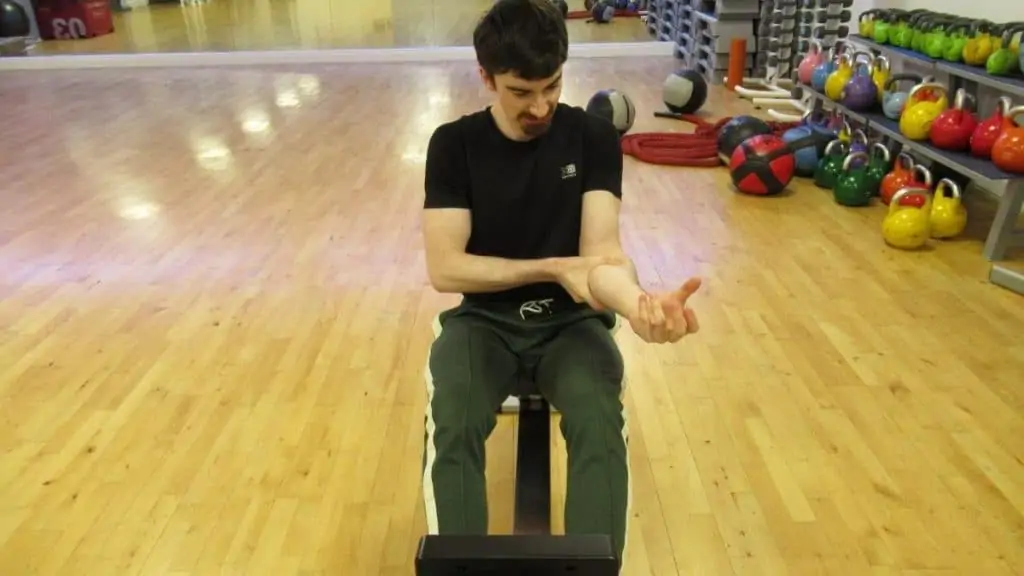
If you (or better yet, your doctor or physio) believes that your pain is just a case of particularly potent muscle soreness, then the best thing that you can do is to focus on your recovery.
Tick off the basics first: Get enough sleep, eat enough calories and protein, do some stretches, don’t do any heavy lifting with your forearms.
Other than that, if your pain is due to an injury, you can perform some Rest, Ice, Compression, and Elevation (RICE) to keep the soreness down.
If the discomfort still doesn’t go away, then it might be worth trying to strengthen your forearms. While rowing is a great exercise for doing just that, it doesn’t isolate the forearms.
So I created a rundown of some of the most effective rowing forearm exercises.
What are some good rowing forearm exercises?
Do these exercises on a separate day from your rowing, where possible. Otherwise, gripping onto the handles will feel like a monumental task.
1. Wrist flexion

You can do this simple exercise anywhere. All you need is a dumbbell and a bench (or any flat and stable surface). If you’re rehabbing an injury, then you can also do an eccentric-only version where you lower the weight with one hand and then lift it back up with both arms.
For the demo, though, I’ll describe the full lifting motion.
- Hold a moderately light dumbbell in one hand.
- Rest the top of your forearm on a weight bench and let your wrist and hand hang off the edge.
- Lower the weight towards the ground by bending your wrist.
- Keep going until you feel a good forearm stretch.
- Come back up by flexing your wrist. Aim to raise the weight slightly above where your hand and forearm would be level.
- Repeat for 2-3 sets of 10-15 reps.
2. Wrist extension
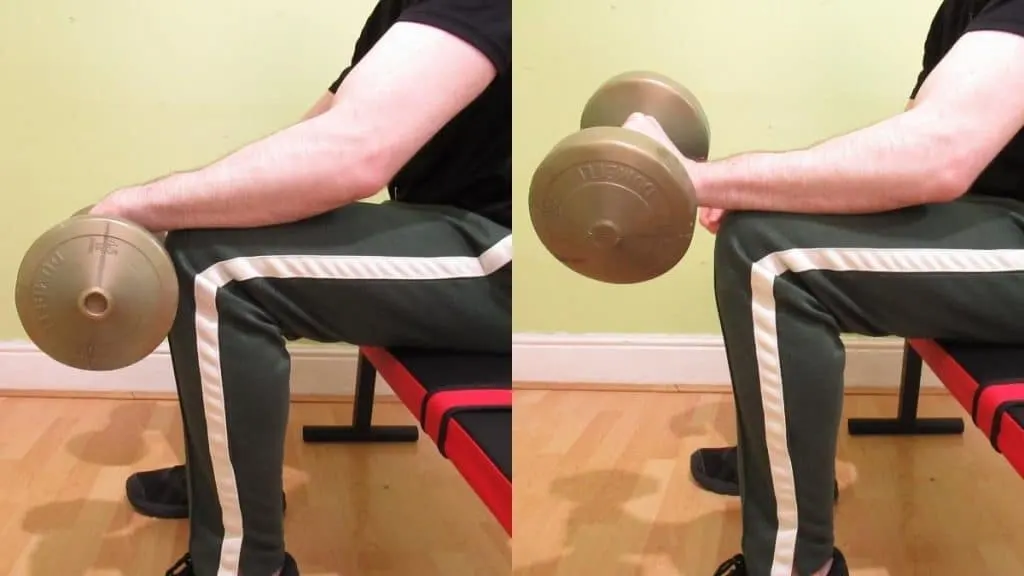
Rowing is one of the few activities that actually works the wrist extensors very well. However, by training them with weights, you’ll make your forearm more resistant to the stresses of rowing because they’ll be more equipped to handle repeated bouts of tension.
- Hold a light dumbbell and then place the underside of your forearm on a weight bench.
- With your hand hanging off the edge of the bench, bend your wrist until you feel a stretch in the top of your forearm.
- Bring the weight back up by extending your wrist. Come above where your forearm and wrist are level for the best contraction.
- Don’t forget your other arm, and repeat for 2-3 sets of 12-20 reps.
3. Hand grip squeezes
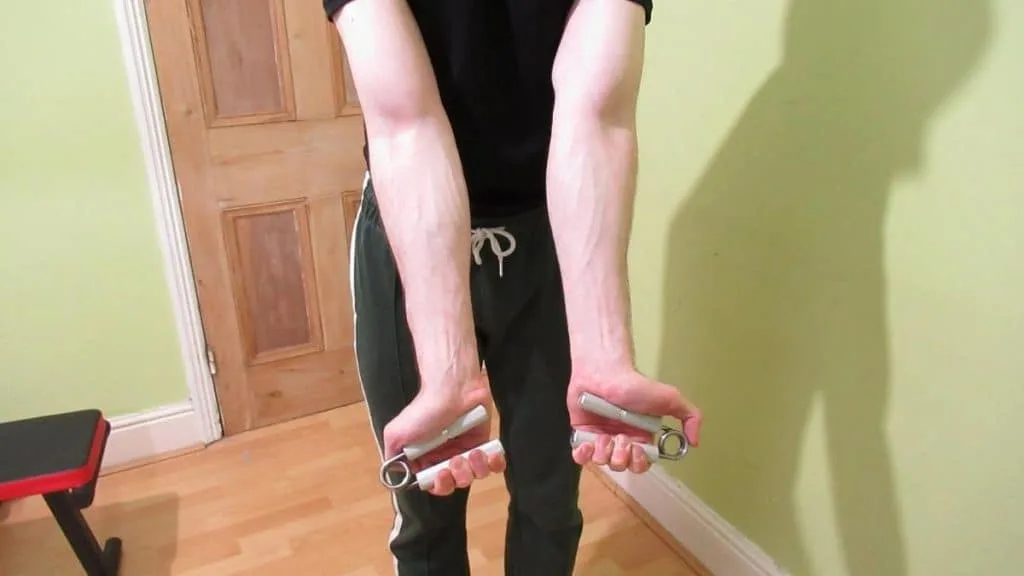
Hand grip squeezes can help to reduce any pain or soreness that you may feel while rowing by strengthening your gripping muscles. This way, you won’t need to grip the handles with all your might just to hang on.
Plus, you can use these grippers anywhere. Sneak in some grip training while your colleagues are scrolling down their news feeds, and you’ll soon see the benefits for yourself.
- Hold your hand gripper between your fingers and the palm of your hand.
- Squeeze the gripper by moving your fingers and palm towards each other.
- Maintain the squeeze until the end of the grippers touch (or almost touch).
- Release the gripper slowly (let your hands/forearm take the strain).
- Focus on form over weight and repeat for 2-4 sets of 8-15 reps for each arm.
Conclusion: Preventing forearm pain during and after rowing
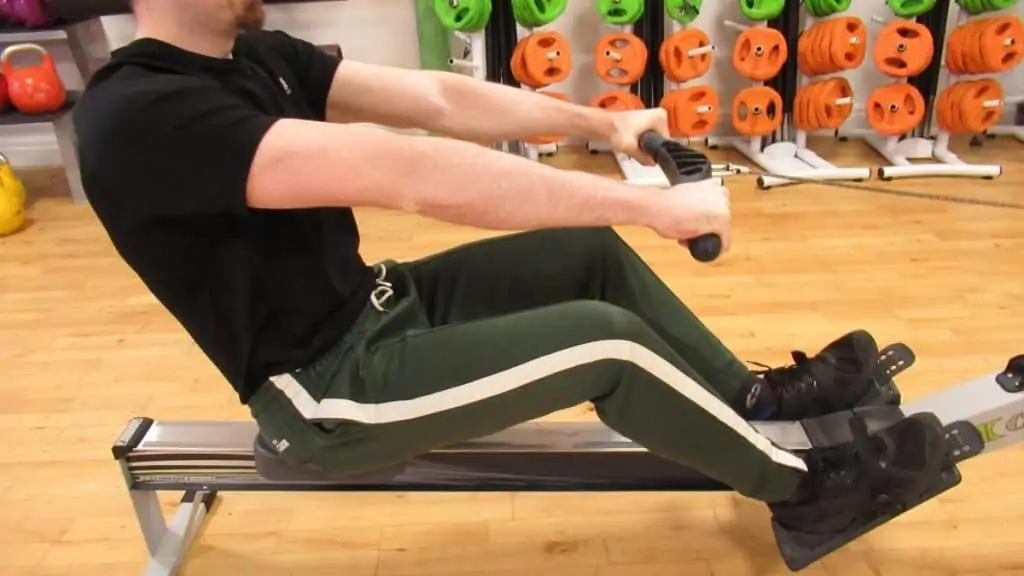
Optimizing your form and improving your recovery regime can help to reduce and even eliminate any rowing forearm pain, soreness, or tightness.
However, it’s equally likely that you might have an injury such as tendonitis or forearm compartment syndrome. In this case, you should definitely see a doctor. They can perform some tests and refer you to a specialist if necessary.
References
- Rower behaviour and the tolerance to pain. (2016, November 25). World Rowing. https://worldrowing.com/news/rowers-behaviour-and-the-tolerance-pain
- Hosea, T. M., & Hannafin, J. A. (2012). Rowing Injuries. Sports Health: A Multidisciplinary Approach, 4(3), 236–245. https://doi.org/10.1177/1941738112442484

